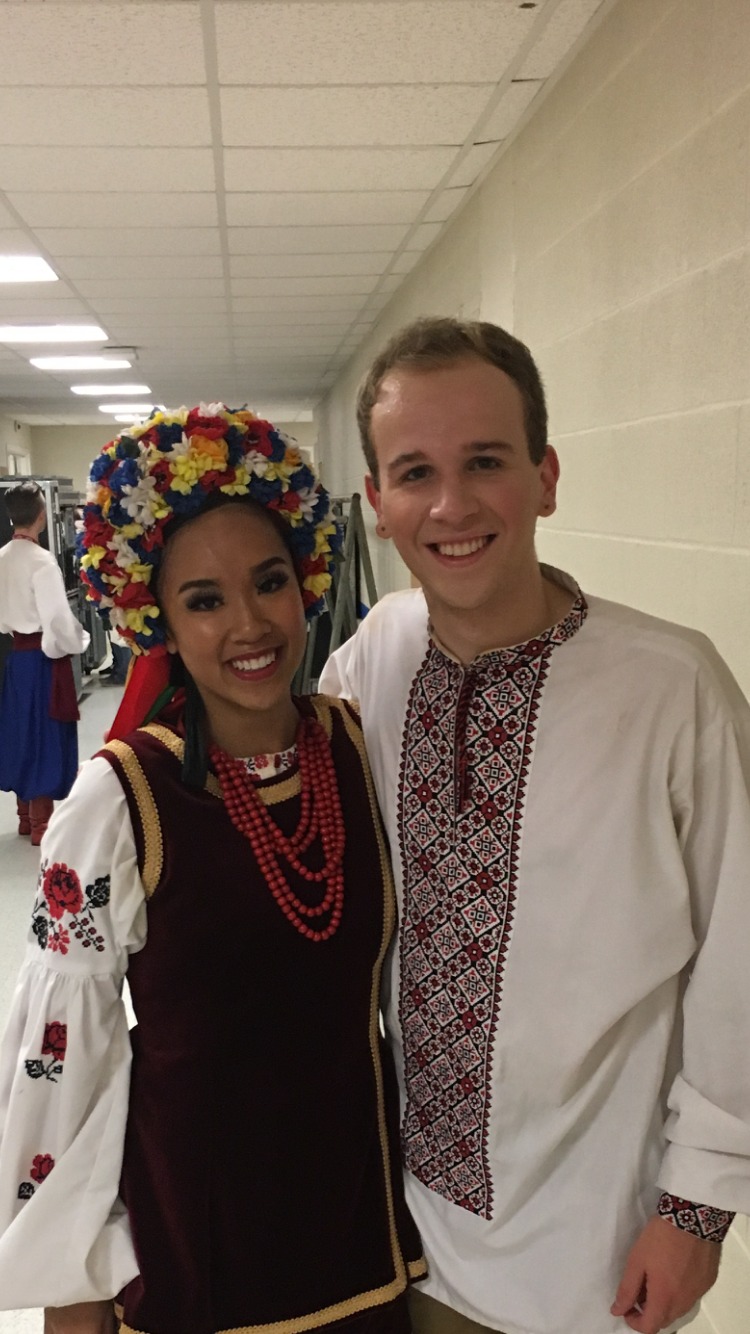
Pharmacy student Michael Eeles with fellow Shumka dancer Alyssa Eugenio.
Balancing a full course school schedule while pursuing an interest you're passionate about can be a challenge.
But for second-year pharmacy student Michael Eeles, combining his passion for Ukranian dance with a four-year pharmacy education is simply a matter of managing his time.
"The key is time management," says Eeles, full-time student and full-time dancer with Ukrainian Shumka Dancers. "We rehearse three days per week - Sunday, Monday and Wednesday - so it's definitely a challenge but I'm very passionate about dancing, so it's enjoyable."
Eeles started dancing with the Shumka School of Dance when he was five years old, following in the footsteps of his two older brothers. "At one point, all three of us were in Shumka at the same time but my oldest brother recently retired, so there's only two of use left," says Eeles.
The Ukrainian Shumka Dancers is one of more than ten Ukrainian dance groups in Edmonton, a hotbed of sorts for this brand of dance. "Edmonton is unique when it comes to the number of Ukrainian dance groups we have to choose from," says Eeles.
Shumka have a performance history in Edmonton of more than 50 years and are a resident company at the Northern Alberta Jubilee Auditorium.
While you might not see a natural connection between pharmacy and dancing, Eeles says he's able to bring skills he has learned with Shumka back to the classroom and specifically in his rotations.
"I'm involved in teaching kids at the Shumka School of Dance as well, so there is definitely some transferable skills to use because in a pharmacy, I have to educate patients all the time," says Eeles, who was born and raised in Edmonton. "Teaching kids has really helped me with my community rotation. Because of Shumka, I think I've become naturally better at teaching and educating patients about their prescriptions."
Eeles says he performs three major performances per year and numerous smaller ones. He recently returned from a major international performance in Toronto, called Fall For Dance North, a gathering of different dance troupes.
"The purpose of festival is to include international and domestic dance companies, a sort of collaboration so people can get a different perspective on dance at an affordable rate," says Eeles. "People are exposed to a great deal of dance genres like jazz, ballet, Ukrainian dance, etc."
One of Eeles major upcoming performances is a Ukrainian version of well-known Christmas ballet, The Nutcracker, called Clara's Dream. Performances take place Dec. 29 and 30 at the Jubilee Auditorium.
Two other fellow Shumka dancers are UAlberta students (in Medicine) and Eeles says it shows the commitment the dancers have to interests outside school and it also shows an ability pursue a more balanced life overall.
Eeles' fellow students have even come to watch his performances. "Going into pharmacy, I did not know anyone, so I had to make a few friends," he says. "I invited some students to our Nutcracker performance and they really enjoyed it because they had never seen Ukrainian dance before."
After graduation, Eeles says he would like to work for a primary care network and if his health is good, he would like to keep up his dance duties at least until he graduates.
"I hope to continue dancing throughout school and beyond," he says. "I think I can manage it during school because it's something I'm passionate about, I'm going to make it work. After I graduate, it will depend on my work schedule because if I can't make rehearsals, I can't do the performances. If my body is still healthy, so I will do it as long as I can."
Eeles says male dancers end up with knee issues because of the grueling floor work they perform and most dancers last between 4-10 years, depending on their health. All dancers are in their early to mid-20s and range in age from 16-32 years old.